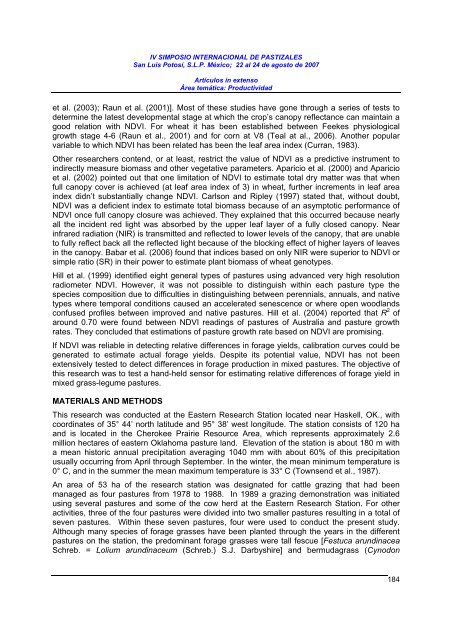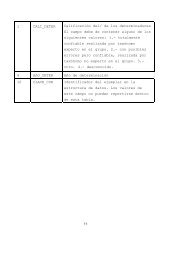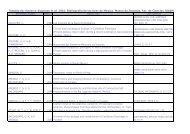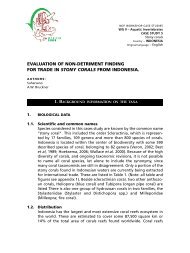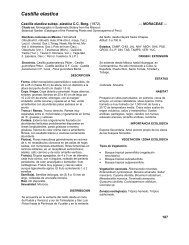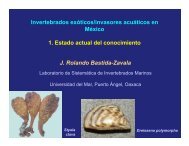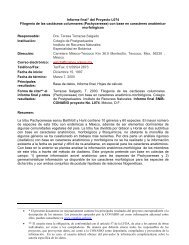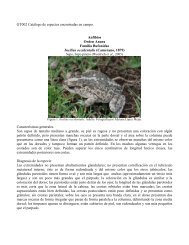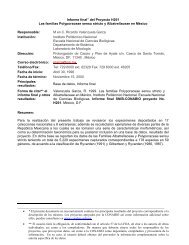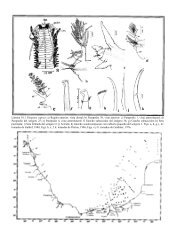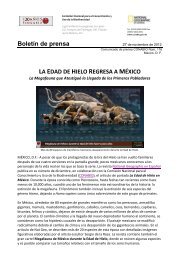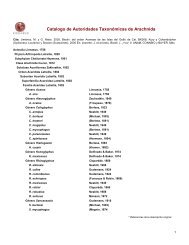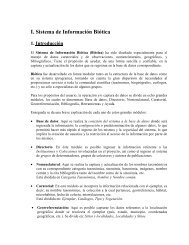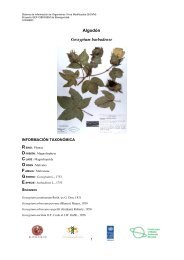ecosystem services to and from north american arid ... - Conabio
ecosystem services to and from north american arid ... - Conabio
ecosystem services to and from north american arid ... - Conabio
You also want an ePaper? Increase the reach of your titles
YUMPU automatically turns print PDFs into web optimized ePapers that Google loves.
IV SIMPOSIO INTERNACIONAL DE PASTIZALES<br />
San Luis Po<strong>to</strong>sí, S.L.P. México; 22 al 24 de agos<strong>to</strong> de 2007<br />
Artículos in extenso<br />
Área temática: Productividad<br />
et al. (2003); Raun et al. (2001)]. Most of these studies have gone through a series of tests <strong>to</strong><br />
determine the latest developmental stage at which the crop’s canopy reflectance can maintain a<br />
good relation with NDVI. For wheat it has been established between Feekes physiological<br />
growth stage 4-6 (Raun et al., 2001) <strong>and</strong> for corn at V8 (Teal at al., 2006). Another popular<br />
variable <strong>to</strong> which NDVI has been related has been the leaf area index (Curran, 1983).<br />
Other researchers contend, or at least, restrict the value of NDVI as a predictive instrument <strong>to</strong><br />
indirectly measure biomass <strong>and</strong> other vegetative parameters. Aparicio et al. (2000) <strong>and</strong> Aparicio<br />
et al. (2002) pointed out that one limitation of NDVI <strong>to</strong> estimate <strong>to</strong>tal dry matter was that when<br />
full canopy cover is achieved (at leaf area index of 3) in wheat, further increments in leaf area<br />
index didn’t substantially change NDVI. Carlson <strong>and</strong> Ripley (1997) stated that, without doubt,<br />
NDVI was a deficient index <strong>to</strong> estimate <strong>to</strong>tal biomass because of an asymp<strong>to</strong>tic performance of<br />
NDVI once full canopy closure was achieved. They explained that this occurred because nearly<br />
all the incident red light was absorbed by the upper leaf layer of a fully closed canopy. Near<br />
infrared radiation (NIR) is transmitted <strong>and</strong> reflected <strong>to</strong> lower levels of the canopy, that are unable<br />
<strong>to</strong> fully reflect back all the reflected light because of the blocking effect of higher layers of leaves<br />
in the canopy. Babar et al. (2006) found that indices based on only NIR were superior <strong>to</strong> NDVI or<br />
simple ratio (SR) in their power <strong>to</strong> estimate plant biomass of wheat genotypes.<br />
Hill et al. (1999) identified eight general types of pastures using advanced very high resolution<br />
radiometer NDVI. However, it was not possible <strong>to</strong> distinguish within each pasture type the<br />
species composition due <strong>to</strong> difficulties in distinguishing between perennials, annuals, <strong>and</strong> native<br />
types where temporal conditions caused an accelerated senescence or where open woodl<strong>and</strong>s<br />
confused profiles between improved <strong>and</strong> native pastures. Hill et al. (2004) reported that R 2 of<br />
around 0.70 were found between NDVI readings of pastures of Australia <strong>and</strong> pasture growth<br />
rates. They concluded that estimations of pasture growth rate based on NDVI are promising.<br />
If NDVI was reliable in detecting relative differences in forage yields, calibration curves could be<br />
generated <strong>to</strong> estimate actual forage yields. Despite its potential value, NDVI has not been<br />
extensively tested <strong>to</strong> detect differences in forage production in mixed pastures. The objective of<br />
this research was <strong>to</strong> test a h<strong>and</strong>-held sensor for estimating relative differences of forage yield in<br />
mixed grass-legume pastures.<br />
MATERIALS AND METHODS<br />
This research was conducted at the Eastern Research Station located near Haskell, OK., with<br />
coordinates of 35° 44’ <strong>north</strong> latitude <strong>and</strong> 95° 38’ west longitude. The station consists of 120 ha<br />
<strong>and</strong> is located in the Cherokee Prairie Resource Area, which represents approximately 2.6<br />
million hectares of eastern Oklahoma pasture l<strong>and</strong>. Elevation of the station is about 180 m with<br />
a mean his<strong>to</strong>ric annual precipitation averaging 1040 mm with about 60% of this precipitation<br />
usually occurring <strong>from</strong> April through September. In the winter, the mean minimum temperature is<br />
0° C, <strong>and</strong> in the summer the mean maximum temperature is 33° C (Townsend et al., 1987).<br />
An area of 53 ha of the research station was designated for cattle grazing that had been<br />
managed as four pastures <strong>from</strong> 1978 <strong>to</strong> 1988. In 1989 a grazing demonstration was initiated<br />
using several pastures <strong>and</strong> some of the cow herd at the Eastern Research Station. For other<br />
activities, three of the four pastures were divided in<strong>to</strong> two smaller pastures resulting in a <strong>to</strong>tal of<br />
seven pastures. Within these seven pastures, four were used <strong>to</strong> conduct the present study.<br />
Although many species of forage grasses have been planted through the years in the different<br />
pastures on the station, the predominant forage grasses were tall fescue [Festuca arundinacea<br />
Schreb. = Lolium arundinaceum (Schreb.) S.J. Darbyshire] <strong>and</strong> bermudagrass (Cynodon<br />
184


